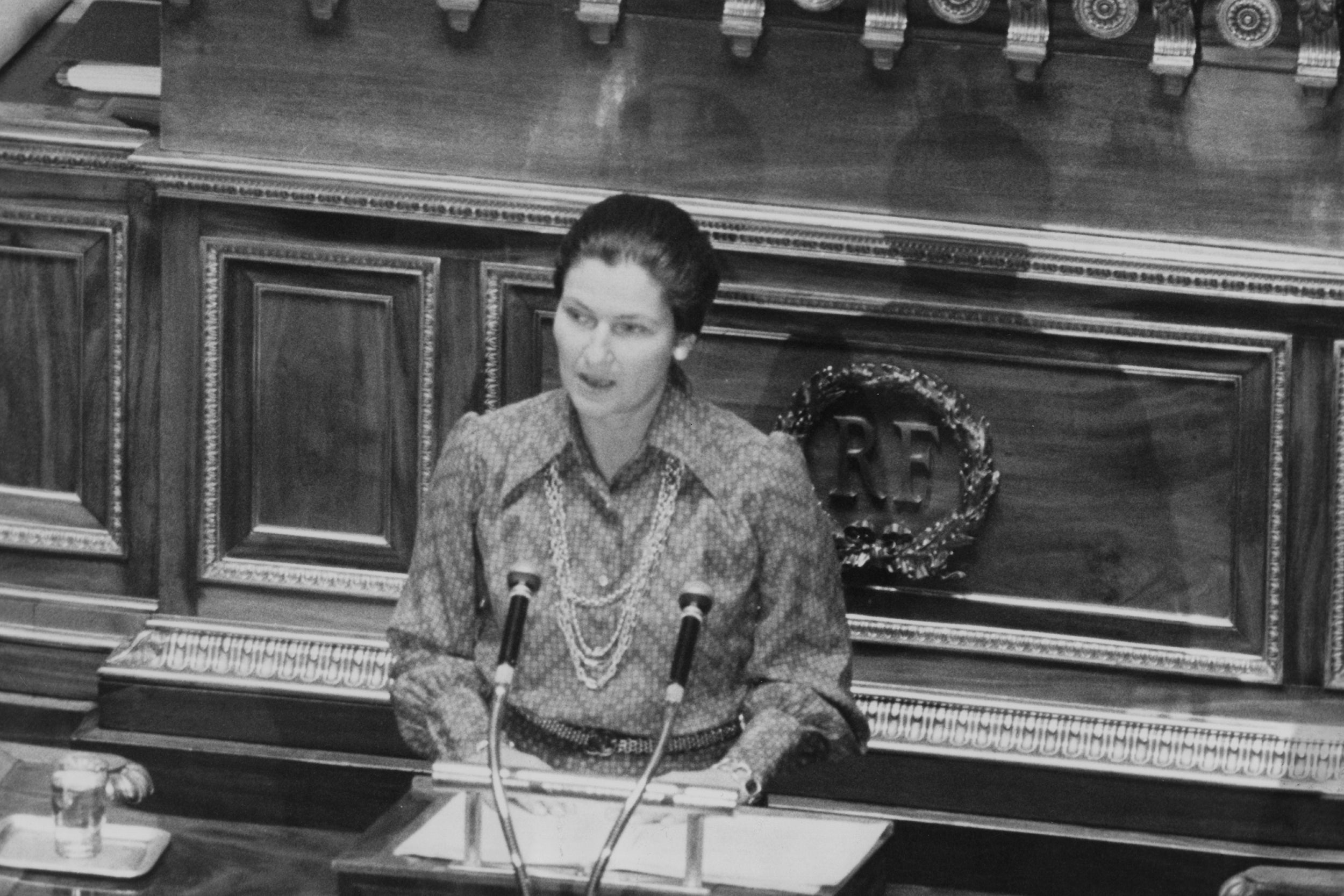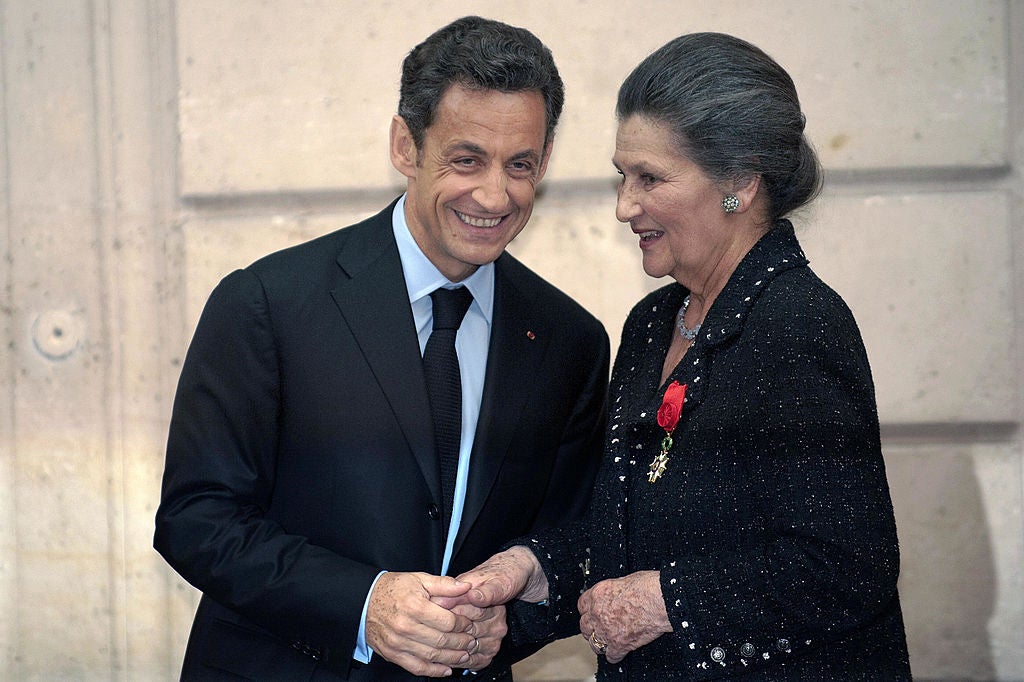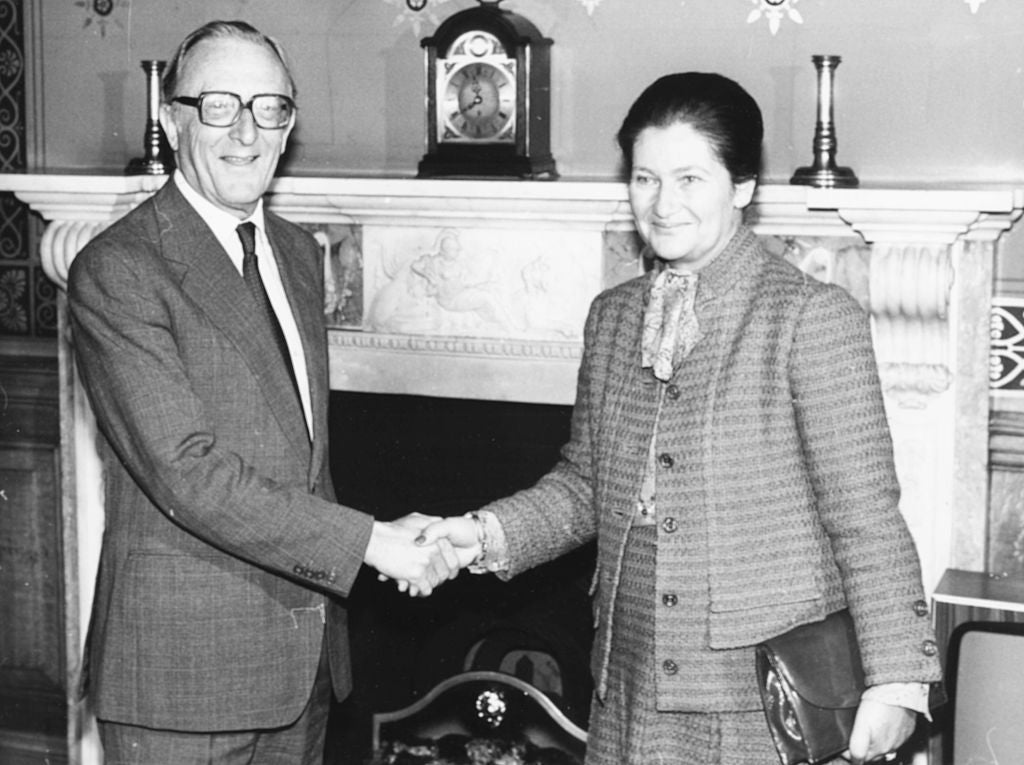Simone Veil obituary: Holocaust survivor and stateswoman who fought for abortion rights
Simone Veil stood at the centre of French politics for more than four decades. As health minister, she saw abortion legalised before becoming the European Parliament’s first female president

Your support helps us to tell the story
From reproductive rights to climate change to Big Tech, The Independent is on the ground when the story is developing. Whether it's investigating the financials of Elon Musk's pro-Trump PAC or producing our latest documentary, 'The A Word', which shines a light on the American women fighting for reproductive rights, we know how important it is to parse out the facts from the messaging.
At such a critical moment in US history, we need reporters on the ground. Your donation allows us to keep sending journalists to speak to both sides of the story.
The Independent is trusted by Americans across the entire political spectrum. And unlike many other quality news outlets, we choose not to lock Americans out of our reporting and analysis with paywalls. We believe quality journalism should be available to everyone, paid for by those who can afford it.
Your support makes all the difference.Simone Veil survived the Holocaust to become one of France’s most influential stateswomen, shepherding the 1975 law that allowed abortion, pushing prison reform and other social causes, and promoting continental unity as the first female president of the European Parliament.
Veil stood at the centre of French politics for more than four decades, ever since President Valéry Giscard d’Estaing elevated her from the civil service to serve as health minister from 1974 to 1979. It was in that role that she overcame political obstacles and, at times, personal insults, to establish abortion rights with the provision still today commonly called “the Veil law”.
She led the European parliament from 1979 to 1982, a role that made her, along with Margaret Thatcher and Indira Gandhi, among the highest-ranking elected women in the world at the time. She served again as health minister from 1993 to 1995 under Prime Minister Édouard Balladur.
Veil rose to political power at a time when most governments, including her own, were dominated by men. It was also a time of reckoning, as much of Europe confronted the slaughter of six million Jews in the Holocaust. The process was particularly searing in France, where the Vichy regime had collaborated with Nazi Germany.
Veil, who was Jewish, had been deported at 16 to Auschwitz with much of her family. She represented “the reconciliation both of French and West Germans and of European Christians and Jews,” a Washington Post reporter wrote when Veil became president of the European parliament.

Her experiences during the war years informed her political positions, particularly her efforts to improve the lives of prisoners, with whom she said she identified, and to defend children and the mentally ill, two classes targeted by the Nazis. She spoke compellingly of the need to never forget the crimes of the Holocaust. But it was often noted that she tended to wear long sleeves to cover the number, 78651, that had been tattooed on her forearm when she arrived at Auschwitz. It was perhaps a too-constant reminder of a darker Europe.
“The idea of war was for me something terrible,” she said in 2007. “The only possible option was to make peace.”
Simone Annie Jacob was born in Nice in 1927. Her father was an architect but was expelled from the profession by anti-Semitic Vichy regulations. Simone, her parents, a sister and a brother were arrested in 1944. The women were deported to Auschwitz and later transferred to Bergen-Belsen in Germany, where Simone's mother died shortly before the camp was liberated in 1945.
Simone’s sister survived, as did another sister who had served in the Resistance and was interned at Ravensbrück in Germany. Their father and brother were sent elsewhere and did not return.
“I found myself thrown into a universe of death, humiliation and barbarism,” she once wrote. “I am still haunted by the images, the odours, the screams, the humiliation, the blows and the sky, ashen with the smoke from the crematoriums.”
After the war she studied law at the Institute for Political Studies in Paris, where she met Antoine Veil, a future businessman, whom she married in 1946. She raised their three sons while pursuing her career, first as a magistrate and then in the civil service. She was an unexpected choice for Giscard’s cabinet but quickly established herself as a powerful centrist force.
She helped increase access to contraception before addressing the matter of abortion. It was an explosive issue in largely Catholic France, engendering often explosive rhetoric. One legislator asked her, “So, Madame Minister, do you want to send children to the ovens?” Veil was said to have welled up in tears.

The law, the first legalising abortion in a Catholic country, passed the National Assembly by 284 votes to 189. It allowed the procedure in the first 10 weeks of pregnancy, mandating that it be performed in a medical facility and that minors obtain parental permission. “Abortion is never a victory,” Veil said at the time. “I would rather say that this is progress.”
In foreign affairs, Veil used her moral authority to speak out on behalf of victims of communist oppression in the Soviet Union, right-wing oppression in Latin America and the boat people of Vietnam. She confessed to having faced challenges as a woman in public life, referring to political parties in France as “men’s clubs”.
“It's difficult for a woman to be a figure of authority,” she said in 1980, “because the very thing people admire in men becomes a point of criticism in women.”
She none the less continued to hold high posts, serving for nearly a decade on France’s constitutional council, until her retirement in 2007. In 2008, she joined the Académie Française, the literary academy and guardian of the French language.
Her husband died in 2013. Their son Claude-Nicolas died in 2002. Survivors include her two other sons, Jean and Pierre-François.
“As a Jew, as a concentration camp survivor, as a woman, you feel very much that you belong to a minority that has been bullied for a long time,” Veil said when she became president of the European parliament.
“As for the deportation, what remains with you most is the memory of humiliation, and that’s a feeling many women have too, of trampled dignity. If this parliament has a Jew, a woman, for its president, it means everyone has the same rights. That means a lot to me.”
Simone Veil, politician: born 13 July 1927; died 30 June 2017
© Washington Post
Join our commenting forum
Join thought-provoking conversations, follow other Independent readers and see their replies
Comments